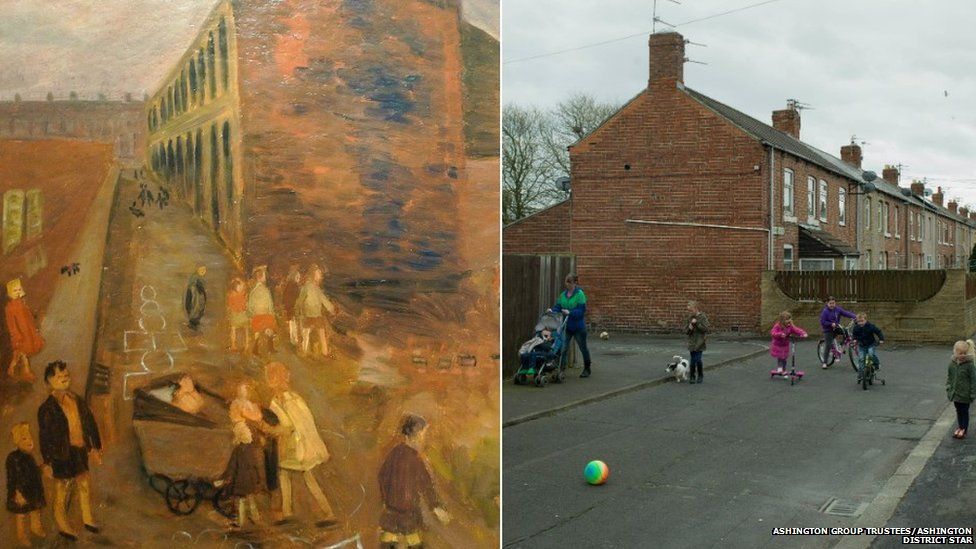Pitmen Painters' art re-imagined by Ashington photographers
- Published

The Pitmen Painters, a celebrated group of miners-turned-artists, rose to prominence in the 1930s with their work chronicling life in the coal-mining town of Ashington, Northumberland. Now, inspired by their example, photographers are capturing the spirit of a community decimated by that industry's decline.
"The dole office was packed out. Nightlife turned into a ghost town as pubs became empty. Drugs began to thrive. I remember being scared of the glue-sniffers.
"Then it just became part of the local culture to smoke cannabis, and class A drugs were easy to find as drug dealers were everywhere."
Myrle Howard, the daughter of a miner, was 13 when Ashington Colliery shut in 1988, four years after the miners' strike came to an end.
Her father Ron would later lose his job at nearby Lynemouth Colliery, which closed in 1994. He became depressed, "which was hard for us five kids to understand - why Mam and Dad were fighting over bills not being paid, living off economy burgers and dry mash potato".
Howard, along with photographer Julian Germain, is now using her camera to record life in a one-industry town that has little in the way of any industry left.
The project, which produces the Ashington District Star newspaper, was commissioned through the bait programme at Woodhorn with investment from Arts Council England.
The Pitmen Painters
-Founded in Northumberland in the early 1930s as a Workers' Educational Association class giving mining families access to the arts
-The Pitmen paintings were inspired by the artists' own lives
-The group held its first exhibition in 1936 at the Hatton Gallery in Newcastle and many of the paintings are on permanent display at Woodhorn Museum in Ashington.
-Written by Billy Elliot creator Lee Hall, their story was turned into a play that was performed at the Royal National Theatre in London and on Broadway
A spokeswoman for development company Arch said reviving Ashington remained an uphill struggle.
"The town has been in a state of decline for many years," she said.
"The loss of coal mining and associated industries created a fundamental imbalance between the need for jobs and the supply of them."
For Myrle Howard, who moved to Greece for several years, some of the problems associated with the town are rooted in a pessimism born of the gradual decline of the coal-mining industry.
"My parents had very little hopes for my future and so I felt they didn't drive me to do well in my education as they felt there would be no jobs at the end of it," she recalls.
"I find now on social media sites, the majority of my friends have terrible grammar."
But she remains hopeful: "I finally moved back and now feel more jobs have been created and money is being invested wisely in our local community.
"If people really want to find work, they can. However, many people just don't have the education and drive."
Ashington
-One of the largest towns in Northumberland with a population of 28,000, it grew from a few farms in the early 19th Century
-Its colliery opened in 1867 and shut in 1988
-At one point, Ashington was the largest mining village in the world, according to Ashington Tourist Information
-Famous sons of the town include World Cup-winning footballers Sir Bobby and Jack Charlton, England fast bowler Steve Harmison and Newcastle United legend Jackie Milburn
- Published12 August 2015
- Published2 August 2014
- Published26 January 2010
- Published5 August 2011